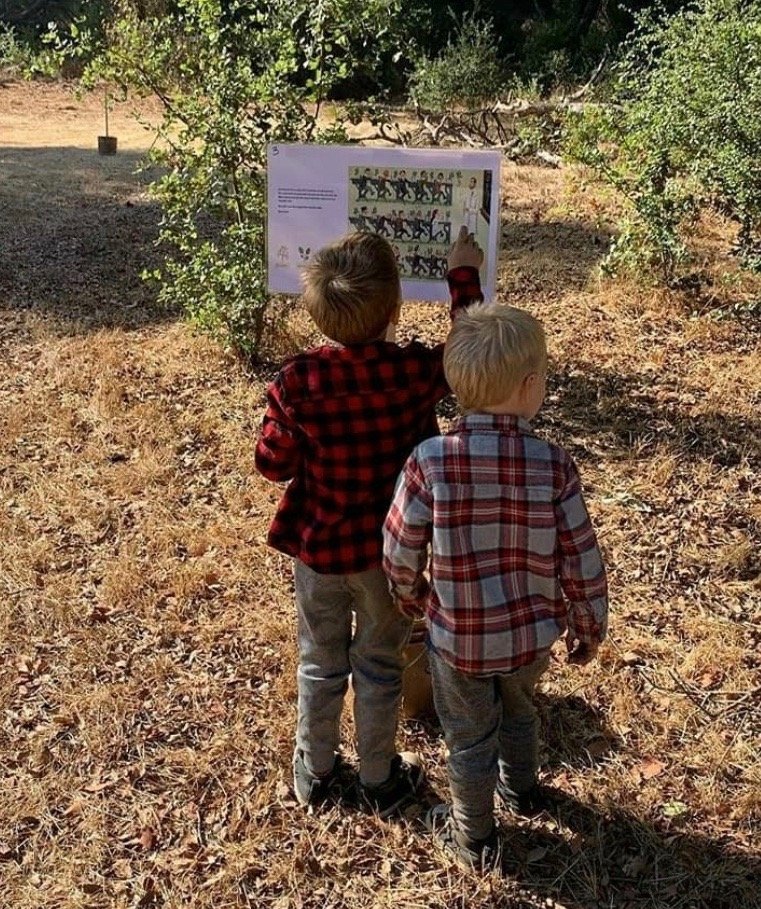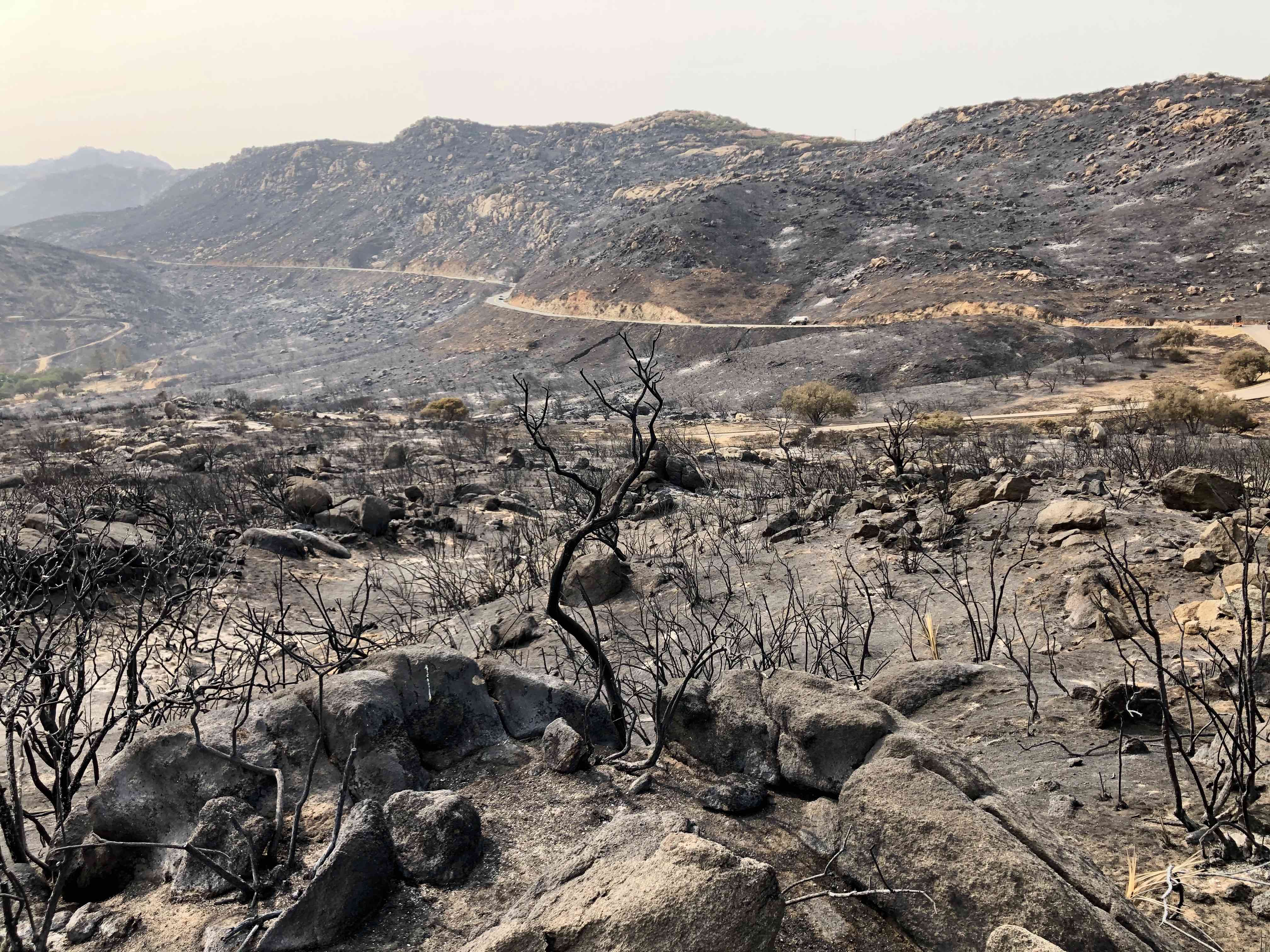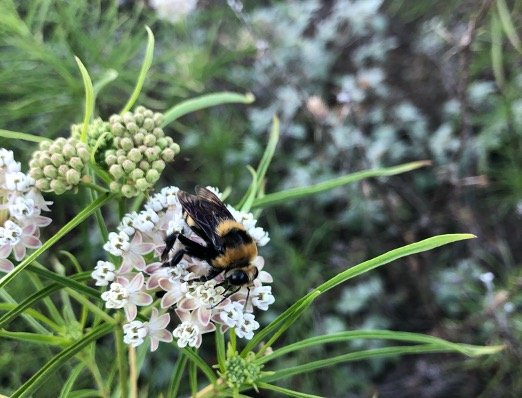Autumn 2020

Dear Friends and Supporters,
I hope this message finds you well and healthy. These past few months have been very busy for EDI, and there is much to share! The pandemic has changed life for all of us, and I am so proud of our team for finding novel and creative ways to continue delivering on our mission, despite unprecedented challenges. Though our regular in-person programming has not been possible this year, we have partnered with local schools to ensure our kids continue receiving quality, science-based outdoor education. We are finding new ways to engage families in nature through storybook hikes, and we held our first ever (mostly) remote plant sale to support the cultivation of native plants in San Diego County. We are working hard with area partners to develop a regional strategy for conserving western monarch butterflies. We are also working closely with our land management agency partners to develop volunteer and outreach programs that will be ready to launch when our public lands become accessible again.
This is an uncertain and stressful time for many of us. But nature is always there for us, ready to offer refuge and renewal. As a new transplant to San Diego, it has been a joy to discover the incredible diversity of life that can be found here. We are fortunate indeed to live in such a place.
- Sarah Maisonneuve, Executive Director
Nature at Home Science Kits
Since we have been unable to get students into nature this year due to the pandemic, we decided to bring nature home to them! EDI Education Director, Vicky Bonnett, has produced and hand delivered Nature at Home Science Kits to all 370 students at Casa de Oro Elementary School in La Mesa Spring Valley. Each kit was designed to align with Next Generation Science Standards for each grade level, from Kindergarten - 6th grade. Kits included nature journaling supplies, soil and native seeds to plant at home, magnifying lenses, and loads of science lessons and activities designed to encourage individual exploration and experimentation at home. Ms. Vicky was happy to accept teacher invitations to join Zoom classrooms, where she shared lessons and demonstrated to students how to use the tools in their science kits. In December, EDI will expand this program to serve additional schools and will distribute a second kit with the lesson theme, “Our Wonderful Water.” We are delighted to have found this way (among others!) to remain connected with our communities and look forward to sharing the students' experiences as they work through their science packets. Make sure to follow us on social media for updates!

Education Director, Vicky Bonnett, distributing EDI's Nature at Home Science Kits and describing their contents to parents at Casa de Oro Elementary School.

All of our Nature at Home Science Kits included a native seed planting activity. This hands-on lesson helps students learn about the lifecycle of plants, and also gives them the chance to create native habitats in their own backyards!
Storybook Hike
Hiking and reading are two of our favorite activities at EDI, and now visitors to Crestridge Ecological Reserve can enjoy BOTH with our first ever Storybook Hike! Families guide their children down a trail that skirts an enchanting oak grove, stopping along the way to explore the pages of a nature-themed storybook. Our first story is, "The Tree Lady: The True Story of How One Tree-Loving Woman Changed a City Forever," by H. Joseph Hopkins.
These Storybook Hikes are a wonderful opportunity for families to safely get outside together and meaningfully connect with nature. The featured book will change every few months so we encourage you to check back often for the next story. Please feel free to share any photos or conversations that result from your hikes with us on Facebook, Instagram or Twitter. We love to hear what kiddos have to say! Happy Hiking!

Kiddos exploring the pages of our first Storybook Hike at Crestridge Ecological Reserve.
Plant Sale
Our annual plant sale was a great success! The process went a little differently this year, as we needed to process all sales in advance. Despited the changes and thanks to your support, we sold nearly 400 plants to gardeners this year. Those 400 plants will provide essential habitat to untold numbers of native pollinator species in San Diego County. Many thanks to all who participated, and supported native biodiversity conservation in your own backyards!
As always, we are forever indebted to our wonderfully dedicated group of EDI volunteers who, together with our Outreach Director Mary Duffy, make this annual sale possible.

Plants ready for their new homes!
Western Monarch Butterfly Conservation
Many of us know that western monarch butterflies are in trouble. In Southern California, they now number less than 1% of the population recorded in the 1980’s. In response, EDI has partnered with U.S. Fish & Wildlife Service, San Diego Pollinator Alliance, Resource Conservation District of San Diego, and Endangered Habitats Conservancy to develop a regional strategy to meet the habitat needs of the western monarch butterfly in our county and help prevent its extinction.
One of the actions we are taking is to create a seedbank of native milkweed that we will make available to growers throughout San Diego County. We are having great success so far, and in October we cleaned and processed our first batch of milkweed seed.

Our incredible EDI volunteers cleaning and processing milkweed seed, so it will be ready to plant next year.
How YOU Can Support Western Monarch Butterfly Conservation
We know many of you want to contribute to support monarch butterfly conservation, and we do indeed need your help!
At this time of year, the most effective action each of us can take to protect monarch butterflies is cut back the tropical milkweed in our gardens. We should be sure to continue this practice throughout the winter, to better imitate the life cycle of native milkweeds. We do this because non-native, tropical milkweed provides an artificially available year-round food source to monarchs, which disrupts natural migration patterns and also leads to a build-up of parasites in their bodies that decrease their survival rates.
We will continue sharing science-based information throughout the year about actions you can take to help protect western monarchs. Please stay tuned to our social media and our quarterly newsletters for updates!

The Valley Fire
We at EDI are thankful that so many of our Southeast County volunteers, partners and community members escaped the Valley Fire (affecting Japatul Valley, Lawson Valley, Lyons Valley, Cuyumaca National Forest and Barrett Reservoir) safely, and the folks that fought the fire, and sought to protect our homes, animals and property, also did so without loss of life. Our hearts go out to those who did lose homes, and so much more.
The communities that were threatened and burned are remarkable in their ability to come together and support one another in times of crisis. When evacuated, volunteers came from far and wide to trailer horses and livestock, others opened their doors to evacuees, and some people’s houses were protected from fire by neighbors they had never meet. Concerned citizens dropped off water, gas, feed and supplies. And those who could, kept those who evacuated or stayed inside informed about closures and the status of the fire.

Photo taken near Barrett Reservoir, following the Valley Fire.
More people than ever choose to live near nature, and that comes with risks and responsibility. We recognize that fires in San Diego County often happen in late October, when the Santa Ana winds traditionally impact the southwest. Fires are started by a confluence of factors, but are exacerbated by human influences, spanning from ignitions to suburban sprawl and climate change—not only a driver of extreme temperatures, but also the single greatest threat to our planet and its inhabitants. A 2020 World Wildlife Foundation report shows that biodiversity has declined globally by an astounding 68% since 1970.
We learn from these experiences. We strive to improve our defensible spaces and personal safety, but it is also time to consider the beautiful wild places that we call home, and work to protect these environments and the diversity of life they support and that sustain life on earth.

A Crotch's bumblebee (Bombus crotchii) pollinating a native narrowleaf milkweed (Asclepias fascicularis) plant.
Remember to stay connected with us on Facebook, Instagram and Twitter for the latest updates!



